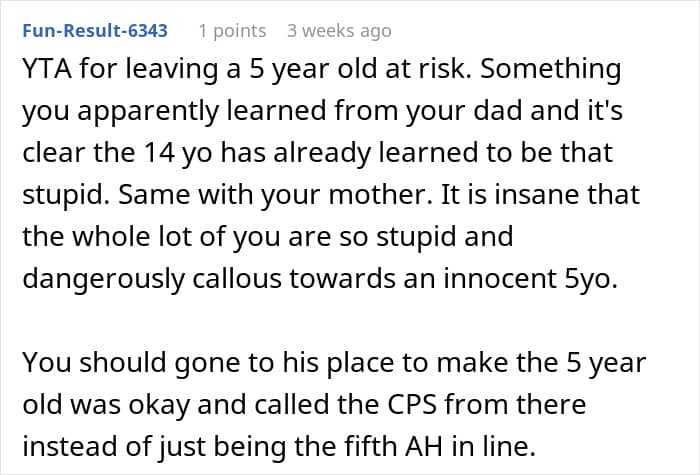When people avoid difficult conversations, their problems often don’t just go away. On the contrary, hurt feelings can make things much worse. Seventeen-year-old Reddit user LittleFoyoo posted an emotional confession on r/AITAH, telling the community about the complicated fallout of their dad’s affair. A messy custody arrangement and pressure to step in as a sibling for two girls they’re not related to made the teenager feel stuck in a stepfamily they never asked for. The tension within the household eventually imploded, and sadly, it was the youngest child who was caught in the middle.
RELATED:
Having a stepfamily is not something most people anticipate or plan for
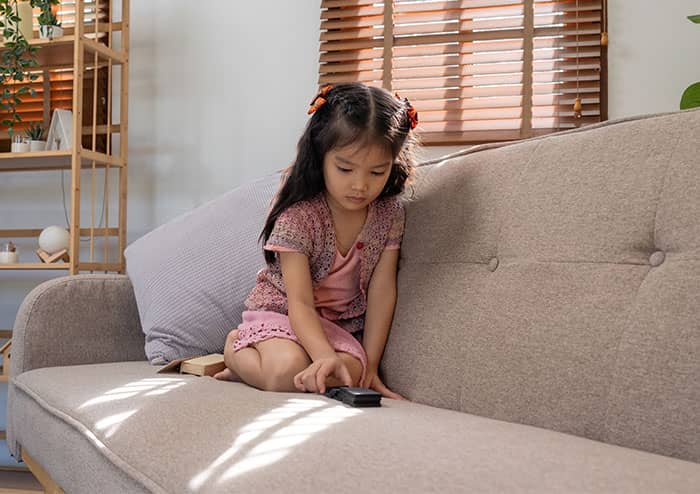
Image credits: nateemee / Envato (not the actual photo)
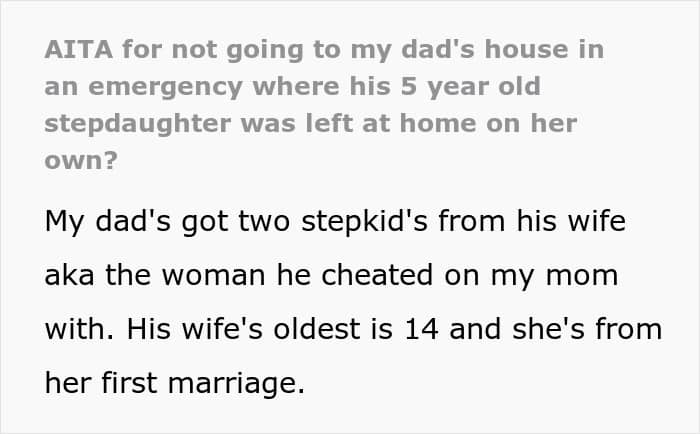
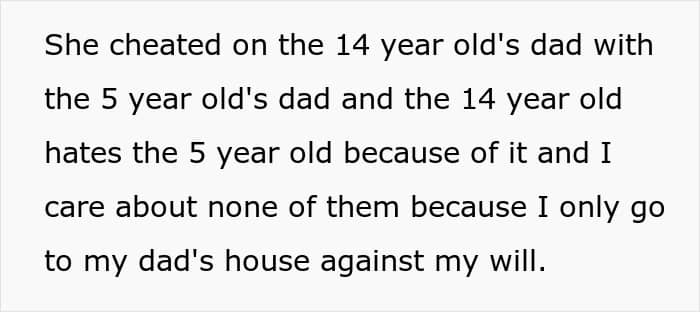
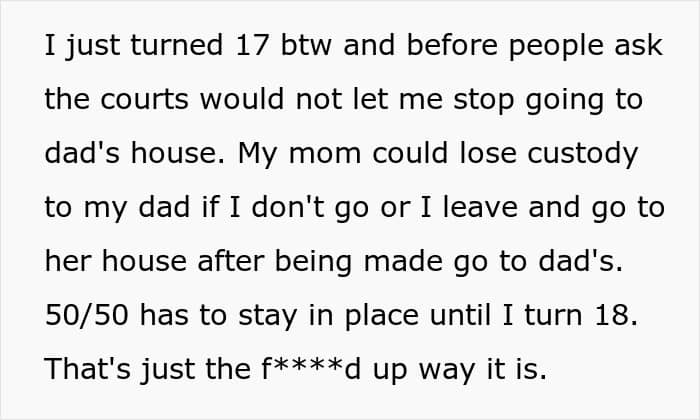

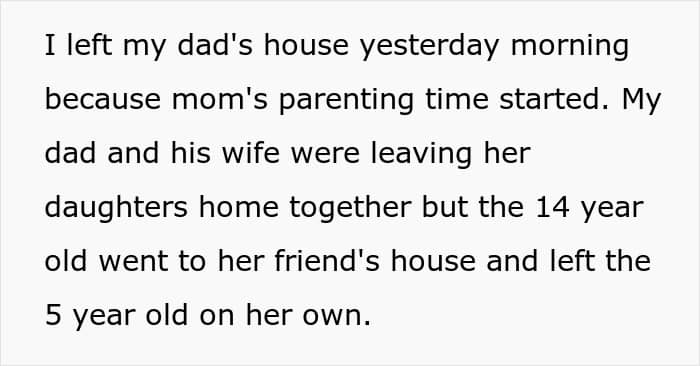
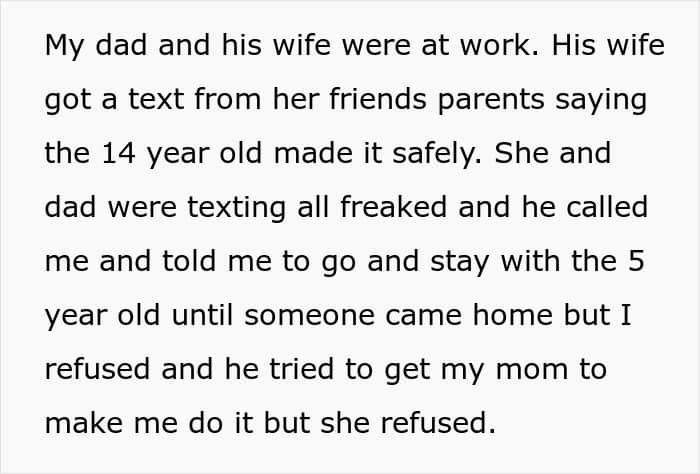



Image credits: Prostock-studio / Envato (not the actual photo)
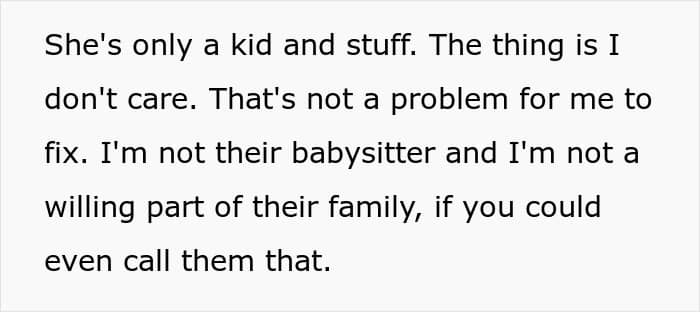

Image credits: LittleFoyoo
Many people who have step-relatives place them “below” their biological family members

A Pew Research Center study from the 2010s found that among the 2,691 adult respondents, 42% said they have at least one step-relative. Three-in-ten have a step- or half-sibling, 18% have a living stepparent, and 13% have at least one stepchild.
When asked whether their family life has turned out to be what they expected, a 54% majority of those who have at least one step-relative said things have turned out differently than they expected.
Also, most adults who have step-relatives, just like our Redditor, are closer to their biological family members.
For example, among adults who have both a living parent and a living stepparent, 85% said they would feel very obligated to help out their parent, while just 56% said they would feel a similar sense of obligation toward their stepparent.
Similarly, people are more inclined to come to the aid of their biological siblings than they are to assist their step- or half-siblings. Among those who have both, 64% said they would feel very obligated to a sibling who was in serious trouble, and only 42% said they would feel very obligated to provide assistance to a step- or half-sibling.
Hopefully, these folks can figure it out.
Stepfamilies can face a number of different problems

“When a stepfamily is formed, the members may have no shared family histories or shared ways of doing things, and they may have very different belief systems, which may include a different ethnic or educational background or religion,” writes the American Academy of Child and Adolescent Psychiatry (AACAP). “In addition, a child may feel torn between the parent they live with most … of the time and their other parent who they visit (e.g., lives somewhere else). Also, newly married couples may not have had much time together to adjust to their new relationship.”
If parents want to build a strong stepfamily, the AACAP recommends:
acknowledging their differences, their personal and family losses, and changes;developing new skills in making decisions as a family;fostering and strengthening new relationships between parents, stepparents and stepchildren, and stepsiblings;supporting one another; andmaintaining and nurturing original parent-child relationships.
And they should consider professional help if:
a child vents/directs anger upon a particular family member or openly resents a stepparent or parentone of the parents suffers from great stress and is unable to help with the child’s increased needa stepparent or parent openly favors one of the childrendiscipline of a child is only left to the parent rather than involving both the stepparent and parentfrequent crying or withdrawal by the child; ormembers of the family derive no enjoyment from usual pleasurable activities (i.e., learning, going to school, working, playing or being with friends and family)
As their story went viral, the teenager joined the discussion in its comments
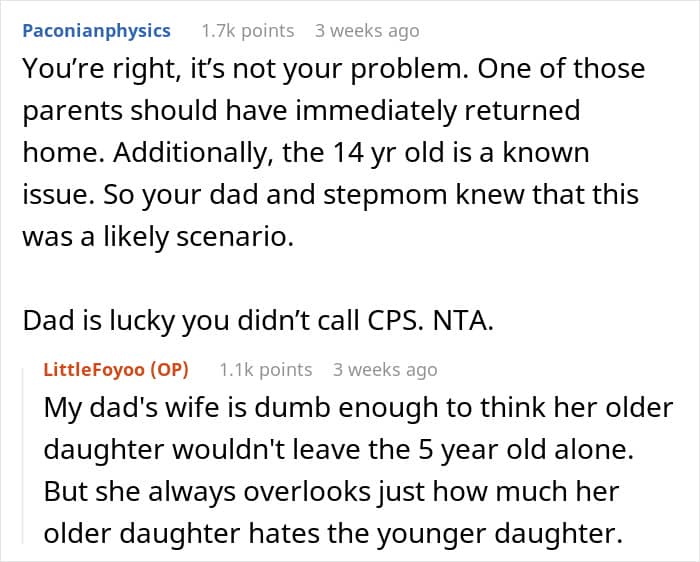
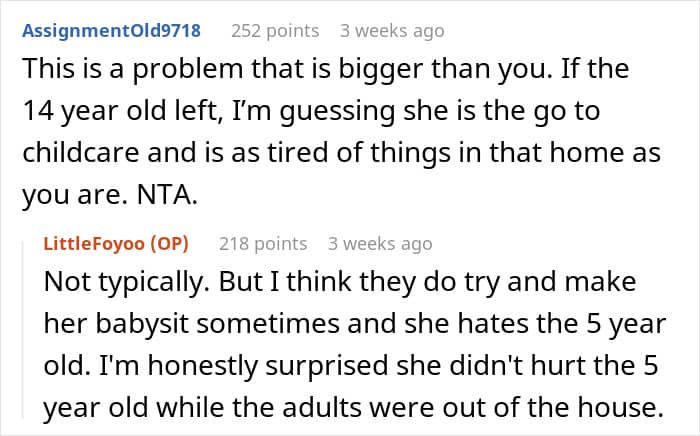
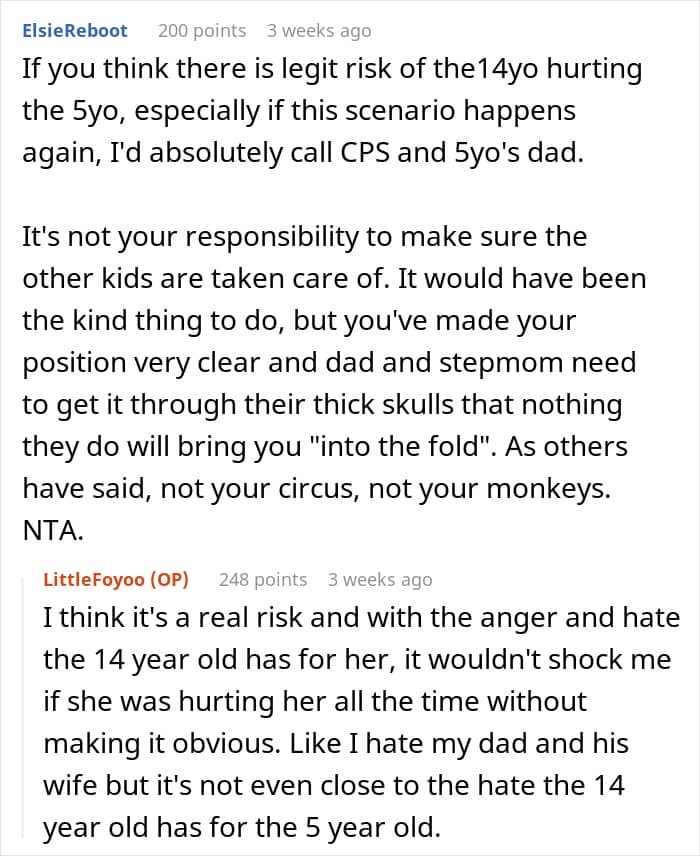
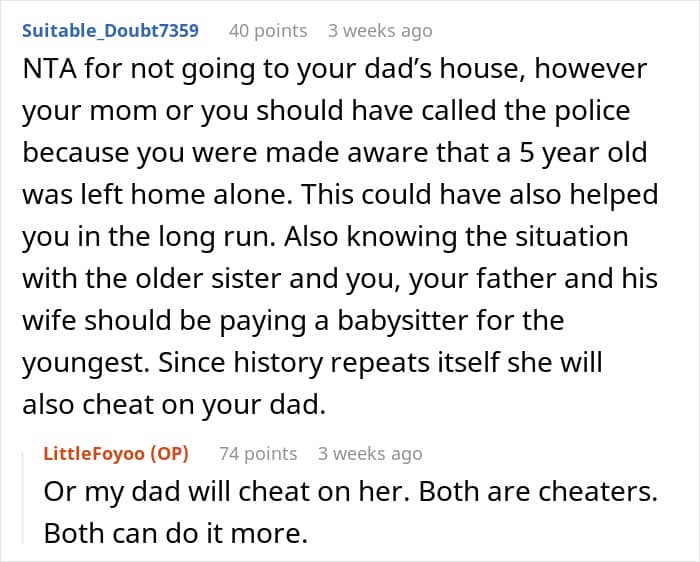
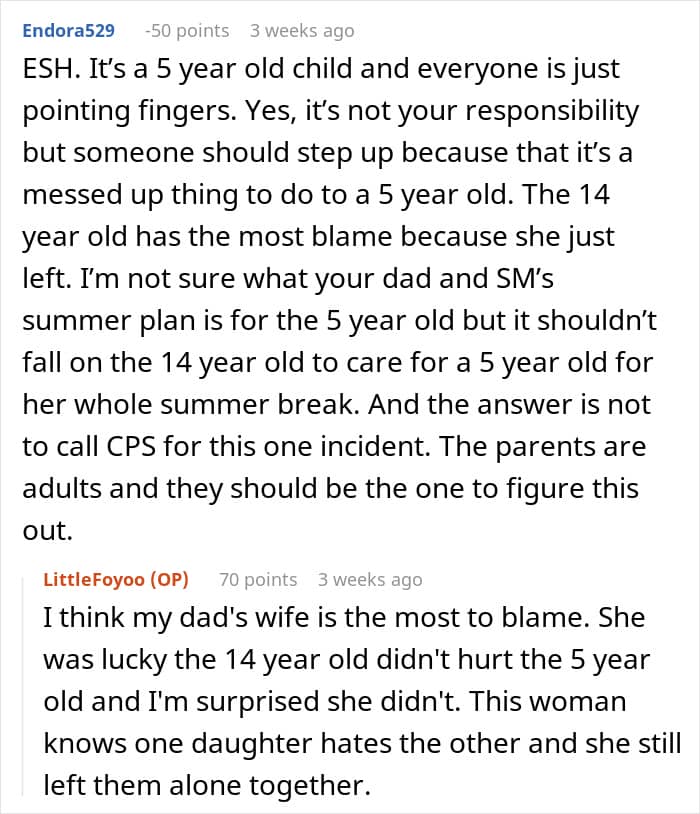
Many said they can’t be blamed for what happened

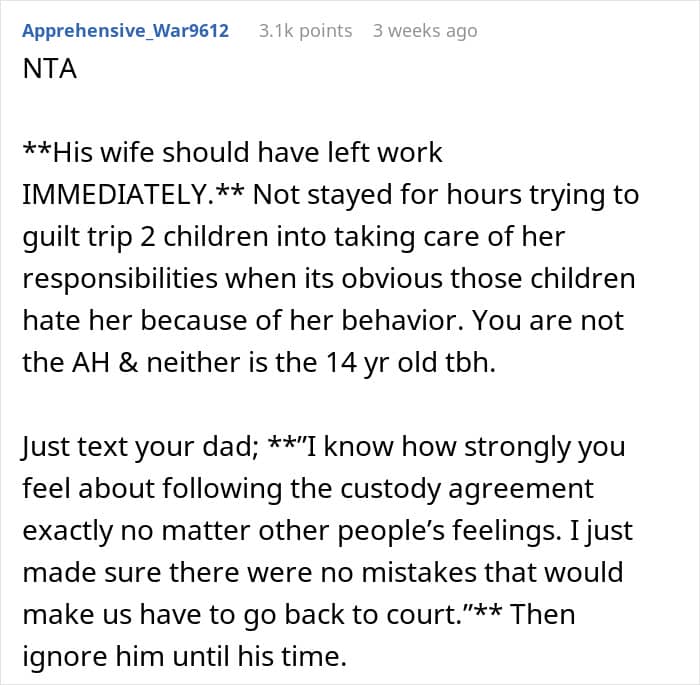




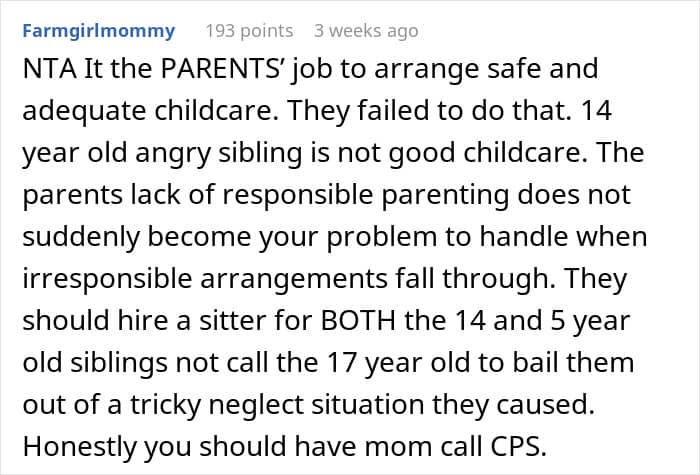



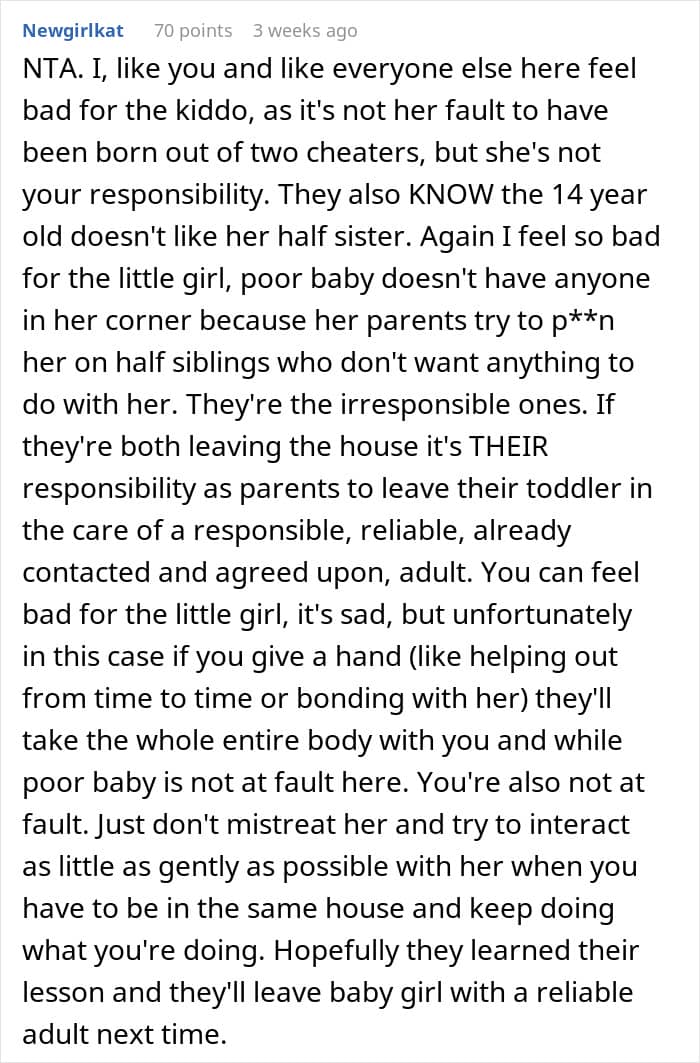

But some have a different opinion
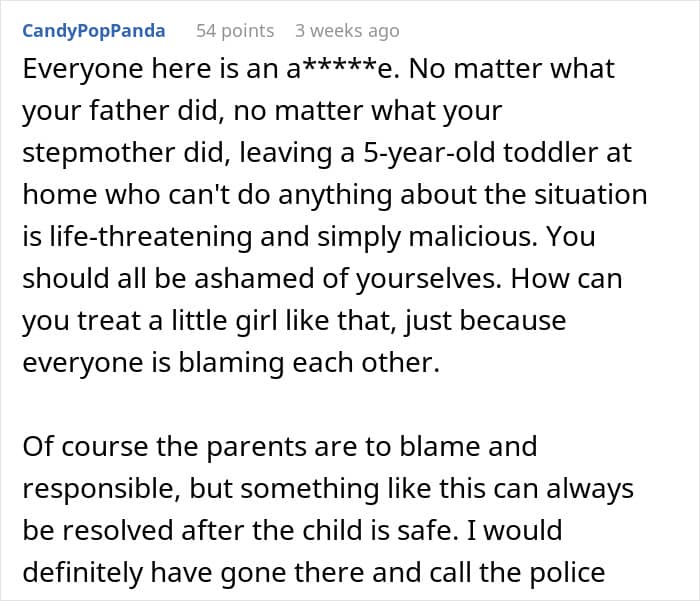

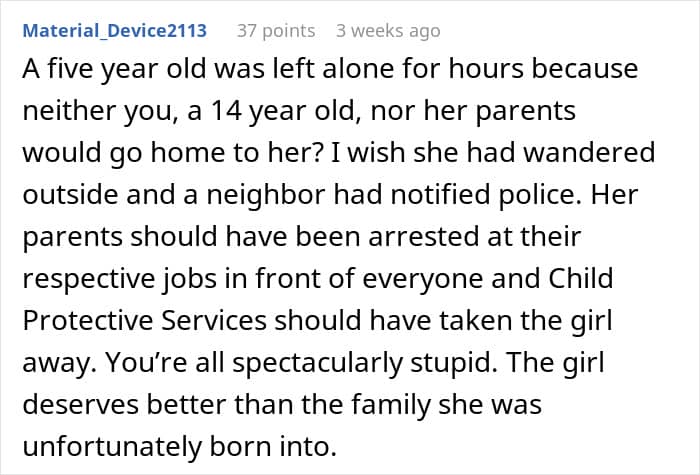


And say the teen could’ve handled the situation better






